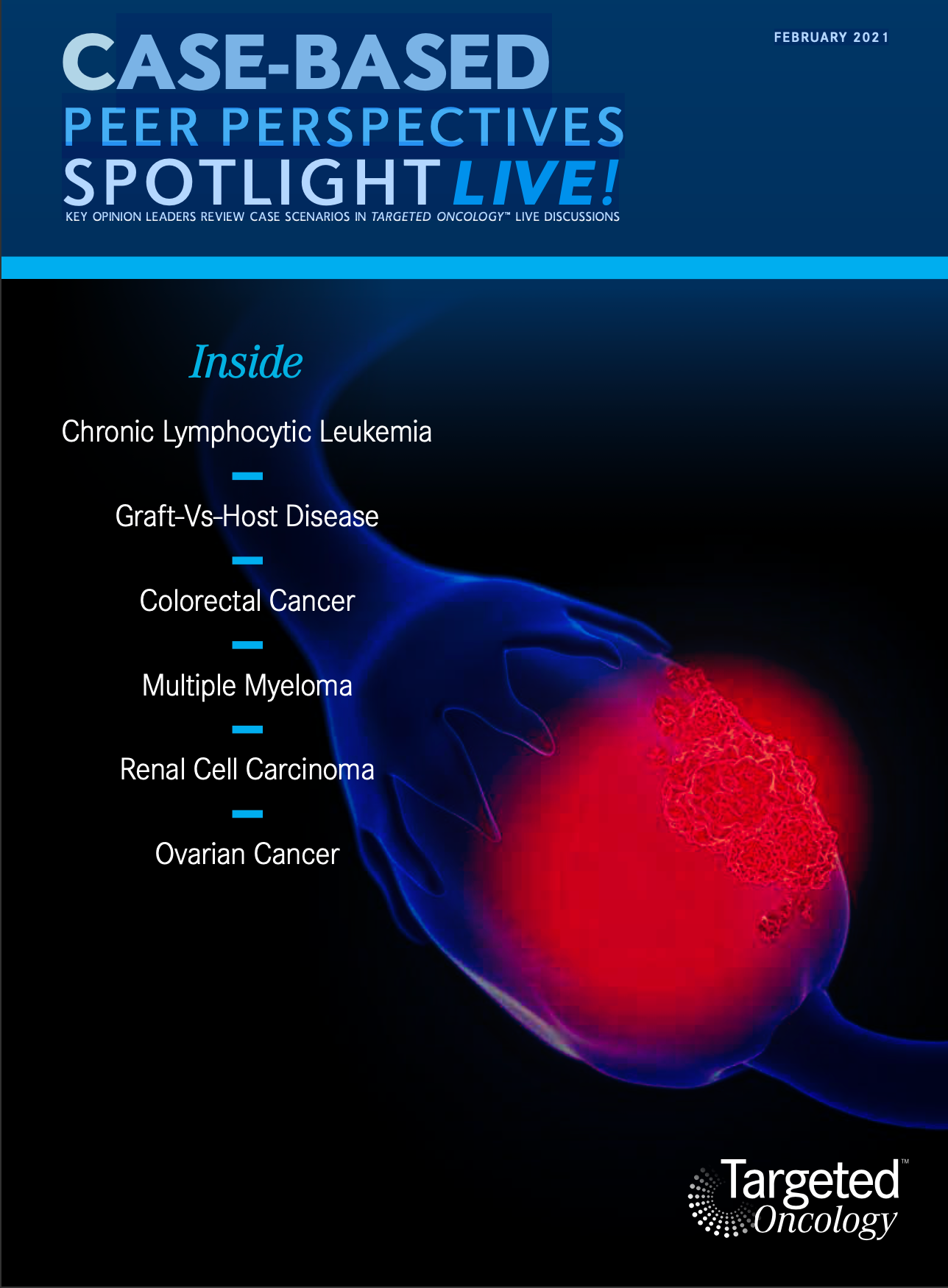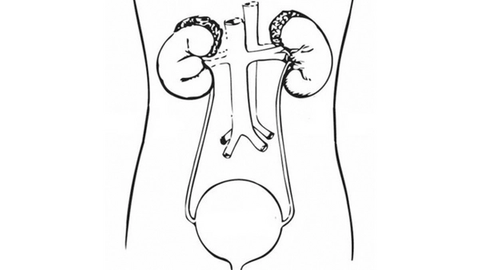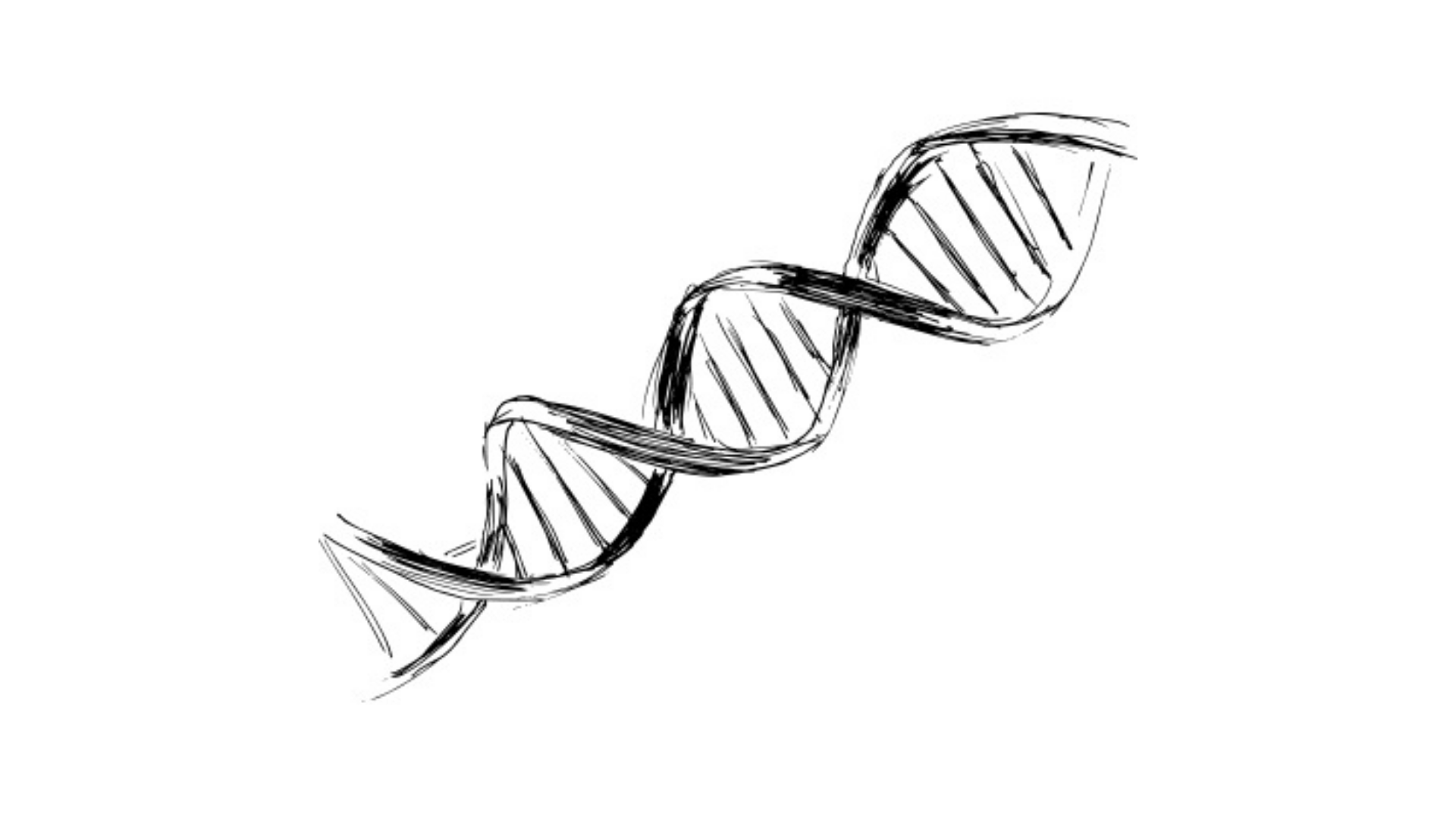Addition of Daratumumab to 3-Agent Regimens Deepens Response to Therapy, According to Nooka
During a Targeted Oncology virtual event, Ajay K. Nooka, MD, MPH discussed the case of a patient with stage II multiple myeloma.

During a Targeted Oncology virtual event, Ajay K. Nooka, MD, MPH, an associate professor in the Department of Hematology and Medical Oncology at Emory University School of Medicine and medical director of Winship Research Informatics Shared Resource at Winship Cancer Institute of Emory University, discussed the case of a patient with stage II multiple myeloma.
Targeted OncologyTM: Does the patient’s risk status change your approach for treatment?
NOOKA: Identifying the high-risk population is extremely crucial. In our practice, we use an intensified maintenance approach to keep patients in remission. When I was a fellow 10 years ago, the first patient I saw had del(17p) and was treated the same way as the next patient, who had standard-risk disease. This made me ask the first question: When we know these patients [will] live less than 2 years, why do we treat them same? The answer that I heard was “because we don’t have any data to do anything differently.”
So that’s where the intensified maintenance started in our practice. When we last looked at the high-risk population, purely defined by the International Myeloma Working Group criteria, patients were living for 7.5 years. [This was] in 1000 patients.1 That was not what I was expecting when we looked at the data. Clearly, we’re making some improvement among these patients.
Can you explain progression-free survival 1 (PFS1) benefit seen in patients?
If the patient has relapsed, received the best induction treatment, received a transplant to deepen the response, [and gone] on maintenance therapy, the first time that patient relapses is the PFS1 benefit. In all the studies that we have looked at, the PFS1 is almost half of the patient’s life, the patient’s journey.
We [recently] went from using a doublet to a triplet. We didn’t have any phase 3 data until 2016, with the SWOG study [NCT00644228], where VRd [bortezomib (Velcade), lenalidomide (Revlimid), dexamethasone], the 3-drug regimen that you’re all recommending using with this patient, had shown a significant benefit compared to a 2-drug regimen.2 We typically used [that doublet] as a standard of care based on the phase 3 data that we had around that time.
What barriers have you run into when changing your practice in accordance with new data?
We changed the practice based on what we saw from the GRIFFIN trial [NCT02874742]; we participated in the GRIFFIN trial. When we saw the addition of daratumumab [Darzalex] has relative benefit that is significantly higher for these patients, we changed our practice.3 We did not wait for any data to come in. We changed our practice [and began] using this 4-drug regimen in March of last year. The first 2 months, we got rejections backand forth [from insurance] for every patient I wanted to start [on it]. But after 6 months, after the data were presented in August... we never had any pushback.
When you use daratumumab up front, are you giving patients subcutaneous daratumumab (Darzalex Faspro) or the intravenous (IV) regimen?
Subcutaneous daratumumab is not approved in the frontline setting for the patients who are transplant eligible. The regimens approved in the frontline setting for subcutaneous daratumumab are the transplant-ineligible regimens DRd [daratumumab, lenalidomide, dexamethasone] and daratumumab VMp [bortezomib, melphalan, prednisone] and in the relapse setting with DVd [daratumumab, bortezomib, dexamethasone] and daratumumab/pomalidomide [Pomalyst]/dexamethasone; so, not specifically for this transplant-eligible patient. Nevertheless, when you use daratumumab monotherapy, from a practical perspective, it is almost impossible for our pharmacy to change from giving subcutaneous for some and IV for the others.
We made a change, going completely from IV to subcuta- neous in August, and we never had any insurance pushbacks. The treatment is tolerable. I’ll give you the examples—this is off-label use of data; this is not approved by the FDA, and the FDA-approved indications are the ones that I just discussed. But anybody that goes in for the subcutaneous formulation, the initial wait time, [after the drug is administered over 3 to 5 minutes, is] 3.5 hours after the first dose because that was the median time to infusion reaction in the COLUMBA study [NCT03277105]. If the patient does not have any infusion reactions, [then they are] discharged. From the next time onward, starting the next week, we [discharge] the patient 3 to 5 minutes after they receive the dose.
This is a practical consideration that led us to change, not based on the data. Subcutaneous daratumumab is well tolerated, with a minimal number of infusion reactions compared to the IV administration. The patient satisfaction questionnaires that we have done—these are unpublished data at this point, but what we see are significantly superior. We did not have a single patient of the 100 patients we converted wanting to go back to IV administration.
What are the National Comprehensive Cancer Network recommendations in this setting?
Going by the preferred regimens of the transplant-eligible candidates...the category 1 recommendations are VRd and VCd [bortezomib, cyclophosphamide, dexamethasone].4 We try to use the [minimal] alkylating agents in the up-front setting for anybody who’s transplant eligible or a younger patient because of the risk for significant mutagenic burden at the time of the relapse, which were unpublished data from the CoMMpass trial [NCT01454297] that we were seeing. For patients who were exposed to cyclophosphamide earlier in the course in the CoMMpass trial, we’re seeing the relapse natures were significantly different.
Other recommended regimens are carfilzomib [Kyprolis]/ lenalidomide/dexamethasone and DVd. These are category 2 recommendations. This is based on the GRIFFIN trial.
What does the addition of daratumumab do for 3-agent regimens?
We never had any testing to understand what depth of response we’d be getting by using this 4-drug regimen. But now we have a new drug [and] with minimal residual disease [MRD] testing by various methods, by flow cytometry or next- generation sequencing, we have been able to measure these depths of responses at much lower depths than we ever used to. So by leveraging these, can we use these drugs in the up-front setting to gain those lowest depths and maintain that? That was the thought process of using a fourth drug in the up-front setting.
But using a fourth drug comes with additional toxicity. We needed a drug that has the least toxicity, that should not have any overlapping toxicities with the 3 drugs that we’re using. We used several other agents, and finally, the drug that had shown the additional toxicity to be acceptable is [daratumumab].That’s the rationale of using daratumumab in combination with VRd—to push the PFS1 longer so that you can improve the overall survival.
Which trials are relevant in this space right now?
The first [I’ll talk about is the IFM/DFCI2009 trial (NCT01191060)].5 [One of the questions it asked] was: If you use a good induction regimen, do you need a transplant? The trial was designed to give [half the patients] transplant in the up-front setting, and [the other half of patients had the] option of receiving a transplant when they progressed.
This trial initially began with 1000 patients to be accrued within 2 institutions, one in Europe and the other in the United States. But our way of thinking about maintenance has changed over the years, so we have to separate these; the United States portion is called the DETERMINATION trial [NCT01208662], and we don’t have the results [from that] yet. But the [IFM/ DFCI2009 trial] enrolled 700 patients very quickly and presented their data.
What they were able to show was the postconsolidation responses. The very good partial response [VGPR] among the patients who went for a transplant was higher than that of the patients who did not go for a transplant but received VRd and consolidation [78% vs 69%, respectively]. MRD negativity in the transplant-eligible patients was 80%; in the patients who did not go for a transplant, it was 65%.
The second is the FORTE trial [NCT02203643].6 What the [investigators] did was try to see the benefit [with KRd (carfilzomib, lenalidomide, dexamethasone) and] transplant. So they had 3 arms. The first arm used KRd, a very efficient induction treatment given continuously for a period of 12 months. The second group was KRd for the first 4 cycles, then patients go for a transplant, and then the patients receive 4 [more] cycles of KRd as consolidation. The third group...used KCd [carfilzomib, cyclophosphamide, dexamethasone] given continuously for 12 months.
KCd was shown to be inferior to both the KRd plus transplant and the KRd without transplant. When you look at KRd plus transplant versus KRd, the responses, the postconsolidation VGPR scored 89% and 87%, [respectively]. These are effective treat- ments. This does not [invalidate] the role of the transplant at this point. But by using an effective induction regimen for a longer period, it is feasible [for patients, and] you are able to get almost similar results as you see with a transplant.
Another trial is CASSIOPEIA [NCT02541383].7 CASSIOPEIA used VTd [bortezomib, thalidomide (Thalomid), dexamethasone] versus VTd plus daratumumab. This was to assess the relative benefit that daratumumab adds to the standard induction treatment. Why VTd? This was a European trial, and lenalidomide was not approved in the European regions, so they used VTd as a good modern-day induction regimen. [By] adding daratumumab, the postconsolidation responses were much deeper at 83.4% [vs 78% without]. The MRD rates were 64% versus 44% [respectively].
he GRIFFIN trial was the American version of what you saw in CASSIOPEIA, except that daratumumab was combined with VRd, and VRd alone was a standard-of-care arm.3 [When adding] daratumumab to VRd in the GRIFFIN trial, the MRD negativity rate was in the range of 59% versus 24% for the VRd arm.
Could you go into more detail about the IFM/ FCDI2009 trial?
The [IFM/FCDI2009] trial with RVd versus the RVd and transplant group showed an MRD negativity rate of 65% versus 79% [respectively]. There were impressive responses with the transplant group.
An interesting and important observation: Whether they went for a transplant or they did not go for a transplant, patients who achieved MRD negativity had the best PFS compared with patients who did not achieve an MRD. The caveat is, who are those patients who got MRD? Patients who received a transplant were the ones who achieved higher levels of MRD, and transplant was shown to get responses much deeper and was able to prolong the PFS.
Are there updated data for the CASSIOPEIA trial?
There was a press release...saying that after the second randomization, patients who went on to receive daratumumab in the maintenance seemed to have a PFS hazard ratio of 0.53 [95% CI, 0.42-0.68].8
The primary end point was, after receiving a total of 4 cycles plus transplant plus 2 cycles of VTd or daratumumab/VTd, the stringent complete response [sCR] rate of 29% was seen favoring the daratumumab-based regimen [P =.001].7 This led to the approval of this combination in the United States—not the subcutaneous version but the IV version—by the FDA.
The PFS benefit, the sCRs, and the MRD responses were higher, and the PFS is benefiting the daratumumab arm.
What are the data for the GRIFFIN study? What were the updates from the 2020 American Society of Hematology meeting?
This trial favored the daratumumab arm, where patients who received the daratumumab plus VRd had a sCR [rate] of 42.4% versus patients who received VRd [and had] an sCR [rate] of 32%.9 The MRD negativity rates [for patients] taking the daratumumab/VRd, at the end of consolidation, was [62.5%] at 10-5 versus [27.2%] for the VRd group [P < .0001].
Theadditionofdaratumumabhasresultedinthissignificant relative benefit that you can see [because of the] additional monoclonal antibody in the up-front setting. That is where, I believe, there’s a huge [role] for deepening those responses to gain the best long-term outcome.
When you look individually at all subsets, most of the subsets benefited, except a few.3 Looking at the high-risk group, they cross 1.00, but otherwise, like most of the subsets, have significantly benefited by the addition of daratumumab. We are agreeable to using daratumumab in the up-front setting, showing its benefit, but we don’t have any long-term data. As these data mature, we will be able to make decisions of how long to continue and when to stop it.
The relative toxicity with the addition of daratumumab was not as high as I would expect. There were additional grade 3 toxicities with the presence of neutropenia; it is a cumulative adverse effect when you combine daratumumab [with these drugs]. Thrombocytopenia [was] 16% with daratumumab versus 9%, leukopenia of 16% versus 7%, but these are all manageable with appropriate supportive therapy.
Are there any other important trials for patients with newly diagnosed multiple myeloma?
I’ll conclude with the MASTER trial [NCT03224507].10 When you talk about adding daratumumab in the up-front setting, can we add daratumumab to a better combination than VRd? That’s where KRd comes in. KRd, in terms of the induction, transplant, and posttransplant and stopping these drugs based on the MRD assessments, was done by Luciano Costa from the University of Alabama at Birmingham. What he did was give blocks of treatment. In the induction setting, [he and the other investigators] gave daratumumab plus KRd at 4 cycles and [then would assess] patients [for] MRD. Then patients would go for a transplant, and they would be MRD tested again; then, another block of treatment for another 4 cycles.
What he was able to show was the feasibility of stopping treatment based on the achievement of MRD negativity. I’m eagerly looking for the follow-up data on this aspect: How many patients converted from MRD negativity? In the absence of any continued treatment, how many of them needed to go back onto the treatment?
This is a very effective treatment. Among patients who receive postinduction, posttransplant, and the MRD negativity, most achieve deep responses across the board, both the standard-risk and the high-risk patients. I’m really curious to see how, in the future, we can change the way [to treat these patients]. Can these patients achieve remissions and continue to achieve these long-term remissions with blocks of treatments rather than a continued treatment? This is innovative. I don’t know how these results will pan out, but I’m very curious.
REFERENCES
1.Joseph NS, Kaufman JL, Dhodapkar MV, et al. Long-term follow-up results of lenalidomide, bortezomib, and dexamethasone induction therapy and risk- adapted maintenance approach in newly diagnosed multiple myeloma. J Clin Oncol. 2020;38(17):1928-1937. doi:10.1200/JCO.19.02515
2. Durie BGM, Hoering A, Abidi MH, et al. Bortezomib with lenalidomide and dexa- methasone versus lenalidomide and dexamethasone alone in patients with newly diag- nosed myeloma without intent for immediate autologous stem-cell transplant (SWOG S0777): a randomised, open-label, phase 3 trial. Lancet. 2017;389(10068):519-527. doi:10.1016/S0140-6736(16)31594-X
3. Voorhees PM, Kaufman JL, Laubach J, et al. Daratumumab, lenalidomide, bort- ezomib, and dexamethasone for transplant-eligible newly diagnosed multiple myeloma: the GRIFFIN trial. Blood. 2020;136(8):936-945. doi:10.1182/blood.2020005288
4. NCCN. Clinical Practice Guidelines in Oncology. Multiple myeloma, version 4.2021. Accessed January 22, 2021. https://bit.ly/3hLBFKX
5. Attal M, Lauwers-Cances V, Hulin C, et al; IFM 2009 Study. Lenalidomide, bort- ezomib, and dexamethasone with transplantation for myeloma. N Engl J Med. 2017;376(14):1311-1320. doi:10.1056/NEJMoa1611750
6. Gay F, Cerrato C, Petrucci MT, et al. Efficacy of carfilzomib lenalidomide dexametha- sone (KRd) with or without transplantation in newly diagnosed myeloma according to risk status: results from the FORTE trial. J Clin Oncol. 2019;37(suppl 15):8002. doi:10.1200/JCO.2019.37.15_suppl.8002
7. Moreau P, Attal M, Hulin C, et al. Bortezomib, thalidomide, and dexamethasone with or without daratumumab before and after autologous stem-cell transplantation for newly diagnosed multiple myeloma (CASSIOPEIA): a randomised, open-label, phase 3 study. Lancet. 2019;394(10192):29-38. doi:10.1016/S0140-6736(19)31240-1
8. Genmab announces IFM, HOVON and Janssen achieve positive topline results in second part of phase 3 CASSIOPEIA study of daratumumab in multiple myeloma at pre- planned interim analysis. News release. Genmab A/S. October 21, 2020. Accessed January 22, 2021. https://bit.ly/2HsjywP
9. Kaufman JL, Laubach JP, Sborov D, et al. Daratumumab (DARA) plus lenalidomide, bortezomib, and dexamethasone (RVd) in patients with transplant-eligible newly diag- nosed multiple myeloma (NDMM): updated analysis of GRIFFIN after 12 months of main- tenance therapy. Blood. 2020;136(suppl 1):45-46. doi:10.1182/blood-2020-137109
10. Costa L, Chhabra S, Godby K, et al. Daratumumab, carfilzomib, lenalidomide and dexamethasone (Dara-KRd) induction, autologous transplantation and post-transplant, response-adapted, measurable residual disease (MRD)-based Dara-Krd consolida- tion in patients with newly diagnosed multiple myeloma (NDMM). Blood. 2019;134 (suppl 1):860. doi:10.1182/blood-2019-123170








